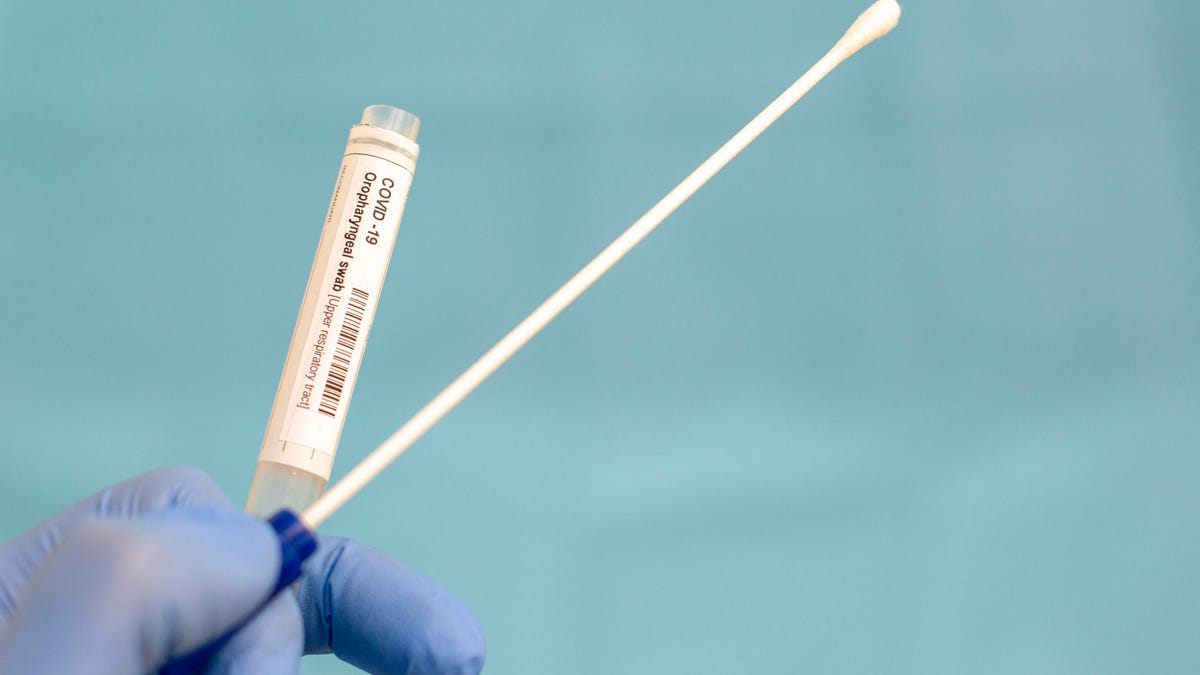Coronavirus testing near me: How to find COVID-19 test sites and wait times
If you have COVID-19 symptoms, you'll need to consult a doctor and possibly get tested. Here's how to find a testing location.

Access to reliable and accurate coronavirus testing can help control the spread of COVID-19, and will be necessary for the continuing effort to reopen the US and regaining some sense of "normal." So how do you find a testing location near you? And is it even possible to find out what the wait time is, so you're not in a car or tent or waiting room all day?
Unfortunately, these aren't easy questions to answer -- but it's a topic we're monitoring, and we'll update this story as new information arises. The first thing you need to know is that at first, the country saw a shortage of tests. But now, testing has become more readily available, and criteria has loosened for who can get tested. Nasal swabs and home test kits are all more widely available now, according to the Washington Post. And new, faster testing methods may be on the way.
Separately, antibody, antigen and serology testing looks for evidence that a person had been infected with COVID-19, even if they never had any symptoms.
While the CDC offers guidance, decisions about who should be tested and how are ultimately left to state and local health departments, and often to individual doctors. Because most people who contract the virus are thought to experience mild symptoms and recover at home, they may be advised not to leave the house to get tested, the CDC notes. However, if you are experiencing symptoms of the coronavirus and want to seek out a test site near you, here's how to do it.
How to find a COVID-19 test site near you
All US states now offer free COVID-19 tests, though availability varies by location. You should first call your medical provider or a telemedicine service. They will tell you if they think you need a test, and how to get one. Or, you can visit your state health department or local health department websites to look for the latest information on testing in your area.
A number of states -- including New York, Connecticut and California -- offer drive-through testing sites. But many of those require a doctor's order or an appointment, so check online or call the location first (though officials in New York have said that those without a doctor's note will not be turned away).
Testing has increased in states across the US since lockdowns began in March, with more than 32 million tests reported, according to the CDC -- 3 million of which were positive for the virus. If you're still having trouble finding a test site and have an iPhone , Apple recently added coronavirus testing locations to its Maps app for iPhone, and those sites now appear. Providers can add their testing locations by visiting register.apple.com/covid-19.
The type of COVID-19 test you take may differ depending on where you go: State and local public health departments have tests from the CDC, while other medical providers are getting tests developed by commercial manufacturers, according to the CDC.
Fighting coronavirus: COVID-19 tests, vaccine research, masks, ventilators and more
See all photosCan you check the wait time?
Hours-long wait times at many drive-through testing centers, clinics and even virtual doctors' offices have frustrated people in many cities across the US. Calling a doctor or clinic ahead of time is your best bet to get an appointment and not have to sit and wait -- potentially infecting others. (The CDC recommends wearing a face covering when you go out in certain areas, even if it's a homemade mask. In some places, masks are even mandatory.)
For drive-through testing centers that don't take appointments, unfortunately, there is often no way to find out a wait time other than to show up. You might check your state or local department of health's Twitter or Facebook accounts to find out if there are updates (for example, when Colorado was first offering drive-through testing, its Department of Public Health & Environment tweeted wait times).
Many drive-through testing centers have a set number of tests to give per day, so it's a good idea to arrive early if possible.
After you get tested, you'll be encouraged to self-isolate until you get results back over the phone (though some clinics are able to return results while you wait). How quickly you'll get those results depends on where you live, though. Thousands of people have waited more than a week for results due to a backlog of tests.
For more information on the coronavirus, here's what to do if you or someone you live with gets coronavirus, what you need to know about making a face mask or covering at home and five things not to do when coronavirus quarantine and lockdown end.

